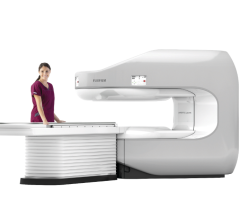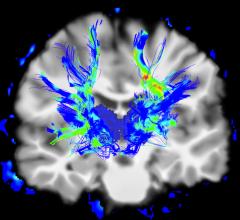
October 16, 2019 — The Radiological Society of North America (RSNA) published the first issue of its new online journal Radiology: Imaging Cancer.
The new journal, the latest of three new online journals added to RSNA’s family of publications, will cover the best clinical and translational cancer imaging studies across organ systems and modalities, including leading-edge technological developments.
“The deputy editors — Bonnie Joe, Lacey McNally, Ashok Srinivasan, Luke Wilkins — and I are excited to launch the first issue of Radiology: Imaging Cancer,” said editor Gary D. Luker, M.D., professor of radiology, biomedical engineering, microbiology and immunology, and associate chair for clinical research in the Department of Radiology at Michigan Medicine in Ann Arbor. “We are delighted that RSNA has started this journal as a new venue for scientists and physicians to disseminate and learn the latest discoveries in cancer imaging.”
Included in the first issue are:
-
“Our Bold New Voyage Begins: Radiology: Imaging Cancer” by Gary D. Luker, M.D.
-
“Let’s Get Real about Molecular Breast Imaging and Radiation Risk” by Carrie B. Hruska, Ph.D.
-
Research highlights from Cancer Research, Science Advances, Journal of Nuclear Medicine and Journal of Vascular and Interventional Radiology.
Original Research:
-
“Comparative Benefit-to–Radiation Risk Ratio of Molecular Breast Imaging, Two-Dimensional Full-Field Digital Mammography with and without Tomosynthesis, and Synthetic Mammography with Tomosynthesis” by Matthew Brown, M.D., and Matthew F. Covington, M.D. Benefit-to-risk ratios with molecular breast imaging are within the lower range of corresponding mammography ratios when accounting for variation in mammographic technique, compressed breast thickness, and age.
-
“A Simulation Paradigm for Evaluation of Subtle Liver Lesions at Pediatric CT: Performance and Confidence” by Jennifer S. Ngo, M.D., et al. A simulation paradigm and user interface for dose reduction research allowed assessment of performance, confidence, and other behavioral metrics that should be accounted for when clinical CT protocols are created and revised.
-
“Abbreviated Gadoxetic Acid–enhanced MRI with Second-Shot Arterial Phase Imaging for Liver Metastasis Evaluation” by Jeong Woo Kim, M.D., et al. Compared with a full original magnetic resonance imaging (MRI) protocol, an abbreviated gadoxetic acid–enhanced MRI protocol including second-shot arterial phase imaging showed faster image acquisition without compromising diagnostic performance, demonstrated fewer motion artifacts, and preserved visual vascularity (with assistance from the subtraction image) for liver metastasis evaluation.
-
“Endovascular Ion Exchange Chemofiltration Device Reduces Off-Target Doxorubicin Exposure in a Hepatic Intra-arterial Chemotherapy Model” by Colin Yee, B.S. et al. on behalf of the ChemoFilter Consortium. Image-guided endovascular chemofiltration with ionic endovascular devices placed nonocclusively in the hepatic venous outflow tract and inferior vena cava during hepatic artery doxorubicin infusion reduced off-target blood and tissue concentrations of doxorubicin in a translational model.
-
“q-Space Imaging Yields a Higher Effect Gradient to Assess Cellularity than Conventional Diffusion-weighted Imaging Methods at 3.0 T: A Pilot Study with Freshly Excised Whole-Breast Tumors” by Nicholas Senn, M.Phys., et al. q-Space imaging yields a higher effect gradient to assess cellularity in breast cancer compared with conventional diffusion-weighted imaging methods by using a clinical 3.0-T MRI unit to image whole freshly excised breast tumors.
The new journal welcomes manuscript submissions related to the applications of imaging across all aspects of cancer, including image processing, studies analyzing clinical data sets, and breakthroughs in interventional oncology.
The journal also seeks reviews on topics highlighting new imaging technologies and the connections between imaging and the mechanisms of cancer biology and therapy.
“We want Radiology: Imaging Cancer to become a ‘must-read’ journal for anyone working at the intersection of imaging and cancer,” Luker said. “Through the forum provided by the journal, we look forward to engaging RSNA members and a broad community of researchers and clinicians who are merging imaging and cancer to improve diagnosis, treatment and quality of life for patients with cancer.”
Radiology: Imaging Cancer is published bi-monthly and available exclusively online.
For more information: www.pubs.rsna.org/journal/imaging-cancer


 July 30, 2024
July 30, 2024 








